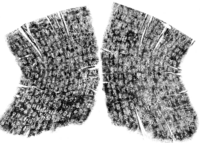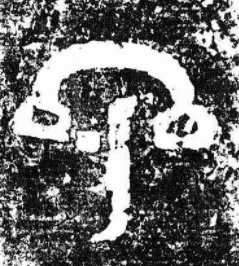Old Meng
| Old Meng | |
|---|---|
 9th-century BCE inscription on the Cauldron of Duke Mo | |
| Native to | Menghe |
| Era | 17th century BCE – 265 CE |
Meng | |
Early form | |
| Language codes | |
| ISO 639-3 | – |
Old Meng is the language of the Meng people from its first written attestation (c. 17th century BCE) to approximately the end of the Meng dynasty in 265. The language is studied through extensive corpora of prose and metrical works, epigraphy, philology, transcriptions, and ancient treatises. Old Meng is also defined as the hypothetical ancestor of all Meng languages and the Shinasthana family. Its descendants are spoken by over 600 million individuals today, in over 20 states. The language may be considered attested, though much of its phonology is reconstructed.
Periodization
In view of the unusually long period deemed "old" under conventional definitions, scholars also subdivide the Old Menghean period into the following:
- Archaic (c. 17th to 12th c. BCE)
- Pre-classical (c. 11th to 7th c. BCE)
- Classical (c. 7th to 3rd c. BCE)
- Post-classical (c. 3rd c. BCE to 285 CE)
These periods are defined for their respective sources and represent, according to some researchers, a purely notational device. Diachronic changes have been extensively researched, with most success in philology, epigraphy, and literature, while little consensus has emerged in the field of linguistics.
Phonology
Consonants
As reconstructed, Old Meng had a rich consonant inventory. It distinguished between voiced and voiceless plosives, affricates, nasals, liquids, and approximants, but the contrast between aspiration, which is common in its daughter languages, may have arisen secondarily. There are five places of articulation—bilabial, alveolar, velar, uvular, and glottal; velar, uvular, and glottal stops are further distinguished in plain and labialized series.
| Initials | Bilabial | Alveolar | Palatal | Velar | Uvular | Glottal | ||||
|---|---|---|---|---|---|---|---|---|---|---|
| Plain | Lab. | Plain | Lab. | Plain | Lab. | |||||
| Stop | Tenuis | p | t | k | kʷ | q | qʷ | ʔ | ʔʷ | |
| Asper | (pʰ) | (tʰ) | (kʰ) | (kʷʰ) | (qʰ) | (qʷʰ) | ||||
| Voiced | b | d | g | gʷ | ɢ | ɢʷ | ||||
| Nasal | Voiced | m | n | ŋ | ŋʷ | ɴ | ɴʷ | |||
| Voiceless | m̥ | n̥ | ŋ̊ | ŋ̊ʷ | ɴ̥ | ɴ̥ʷ | ||||
| Affricate | Tenuis | t͡s | ||||||||
| Asper | (t͡sʰ) | |||||||||
| Voiced | d͡z | |||||||||
| Fricative | Voiceless | s | x | xʷ | ||||||
| Voiced | (ɣ) | (ɣʷ) | ||||||||
| Liquid | Voiced | r | ||||||||
| Voiceless | r̥ | |||||||||
| Approximant | Voiced | w | l | j | (w) | |||||
| Voiceless | l̥ | |||||||||
Vowels
Old Menghean is generally thought to have six vowels, though their phonetic qualities are uncertain.
| Front | Central | Back | |
|---|---|---|---|
| Close | i | u | |
| Mid | e | ə | o |
| Open | a |
Phonotactics
It is commonly accepted that Old Menghean had, at least in its earlier period, consonant clusters. These clusters are understood to have been formed by affixation, around or within a root syllable, though not all clusters are semantically resolvable into their roots. The root syllable is likely to have been in the shape of CVC. As found in Shinasthana, there are at least three prefixes, one infix, and two suffixes. In some cases, the affixes may co-occur with each other, forming larger consonant clusters.
There is strong evidence that Old Menghean may not have been a strictly-monosyllabic language like most of its descendants are. The oldest layers of Shinasthana contains disyllabic congnates with words that are monosyllabic across most of the family. If Old Menghean was polysyllabic, then some of the consonant clusters may have been part of separate syllables. Comparison with more distantly related languages suggest that Old Menghean could have permitted a maximum of three syllables, though it remains uncertain whether any vowel except in the root syllable was contrastive.
Type A/B distinction
Most syllables in Old Meng were symmetrically distinguished between type A and type B, a contrast that conditions multiple phonetic changes in the evolution towards Middle Meng. The phonetic nature of this distinction in the Old Meng period remains uncertain, though it is widely accepted type B syllables had a palatal glide between the onset and vowel in the Middle Meng period. This contrast is also present in Shinasthana, where reflexes of type A syllables are always long, while those of type B syllables may be long or short. In Old Meng poetry, type A and B syllables rhymed freely, suggesting that vowel quality was not responsible for the contrast.
Some reconstructions, particularly more dated ones, project this realization into Old Meng, but Maximillian observes that this palatal glide is not supported by transcriptional evidence and instead posits that onsets in type A syllables were pharyngealized, while type B onsets lacked this feature. He argues further that pharyngealization explains the general raising of vowels in type B syllables, while type A sllables mainly remained or lowered. However, the pharyngealization theory is also challenged by its absence from transcriptional evidence and abnormally broad distribution, whereas this contrast, where it exists, tends to be more restricted.
One theory posits that at a very early stage of the Old Meng language, reduplication was a productive derivational strategy. Subsequently, the stem consonant was debuccalized and became a pharyngeal stop. This stop was then deleted in Shinasthana, generating long vowels, and was reflected as the pharyngealization of onsets in later Meng languages.
Morphology
Old Menghean, unlike all of its known descendants, has productive affixal morphology.
Prefix *s-
Prefix *N-
Prefix *m-
Suffix *-s
Suffix *-ʔ
Infix *r-
Sociolinguistic implications
One of the more intensely researched topics in Old Meng is its historical relationship with Shinasthana, the branch associated with Themiclesians. The earliest evidence for Menghean presence in Themiclesia dates to the 9th century BCE, established radiologically and archaeologically. Shinasthana shows -ps contrasting with -ts that correspond to Old Meng *-ps and *-ts, which are assumed to have merged early as the 9th c. BCE in the lingua franca; this suggests that Shinasthana split off from Old Meng no later than the 9th c. BCE, but the archaeological record strongly contradicts this conclusion.
The branching off of Shinasthana was once generally agreed to date only to the time of the earliest Menghean settlements in Themiclesia. More recent scholarly work reconciles these conclusions by suggesting that the Menghean groups that gave rise to early Themiclesians were not influenced by the lingua franca and thus retained these archaicisms, which later gave rise to Shinasthana. This implies that Old Meng was a group of languages with significant internal diversity, and the lingua franca recovered in classical texts represent only one variety of Old Meng.
